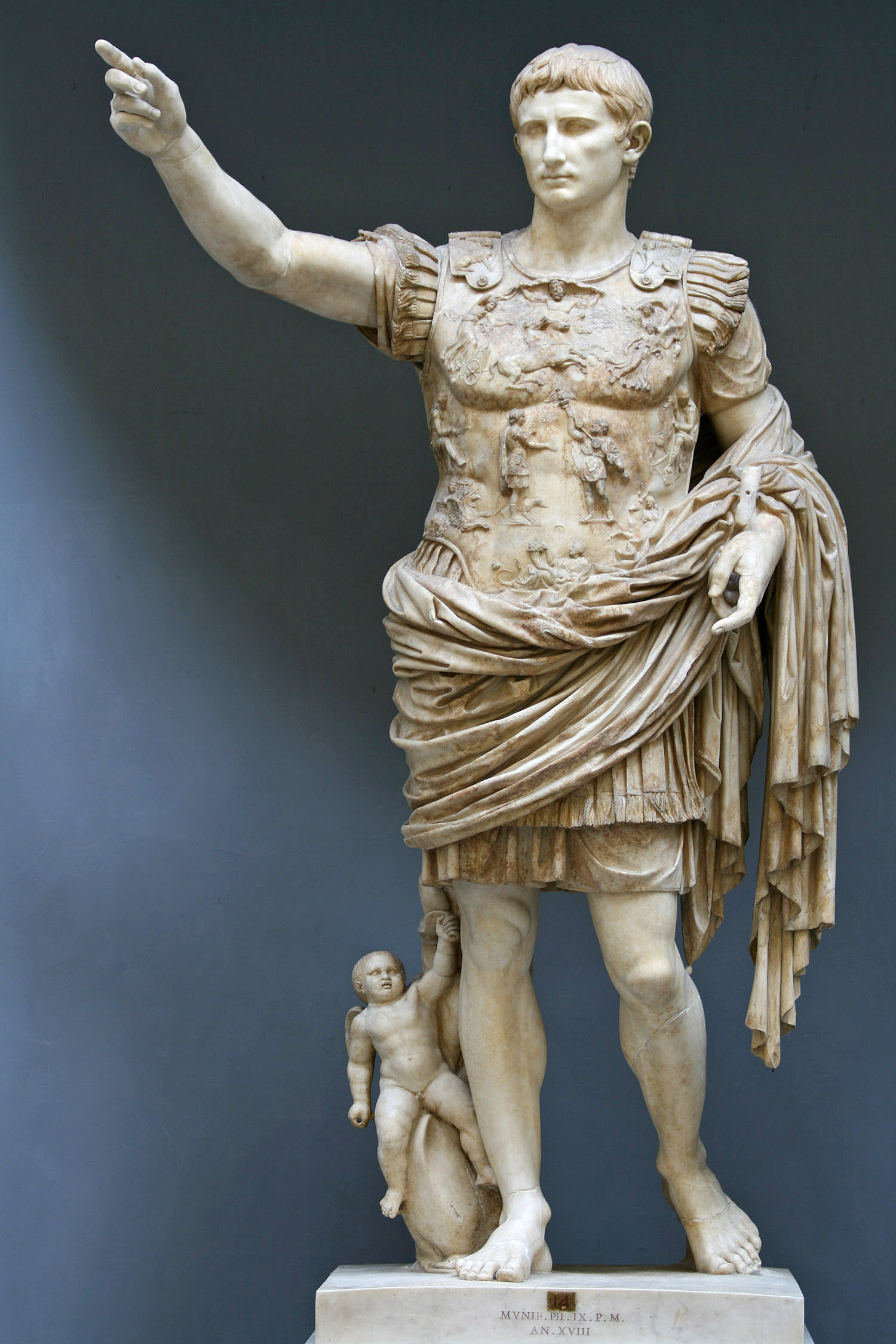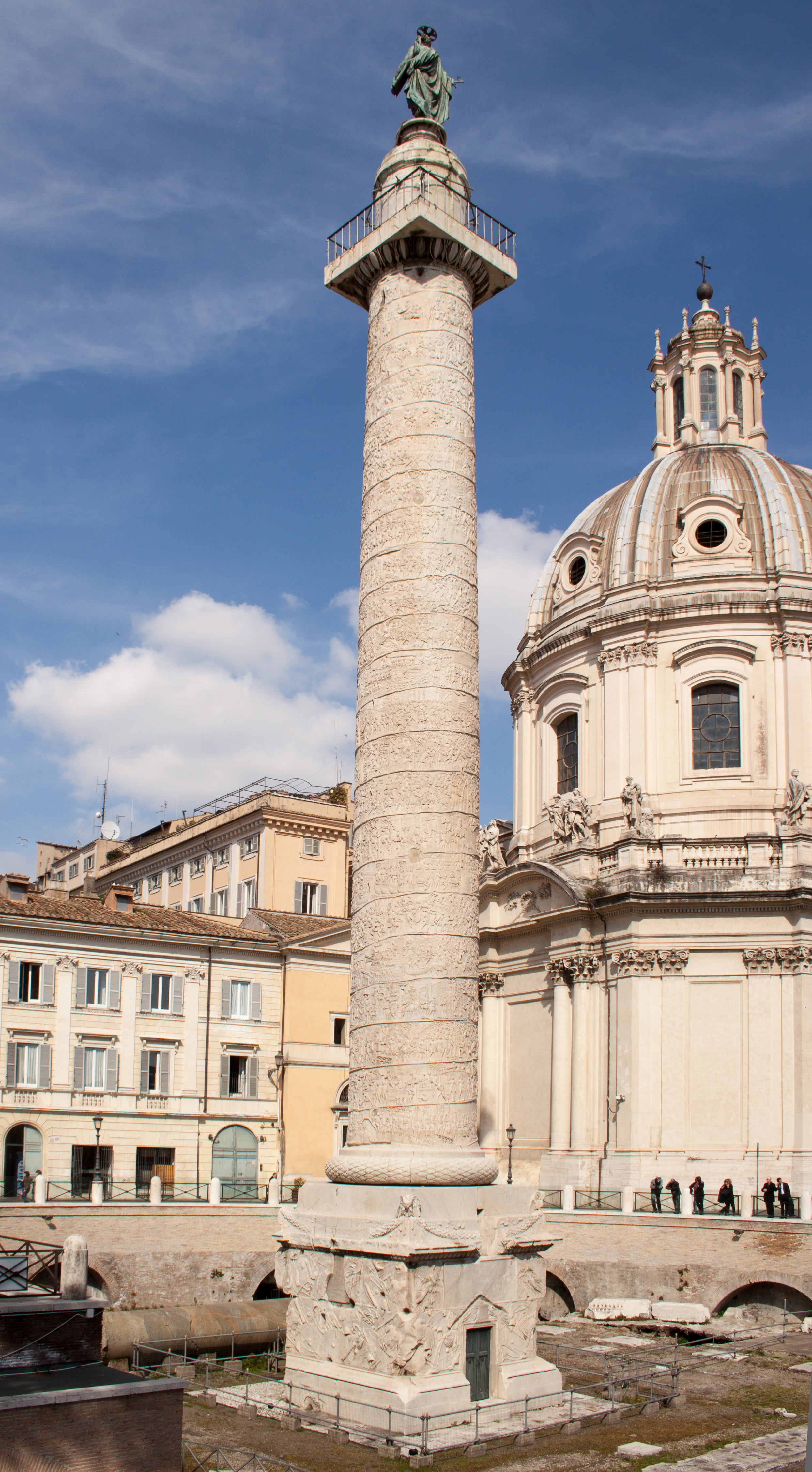25 Chapter 6.4: Roman Art: The Imperial Period, Imperial Portraiture, Roman Imperial Monuments
ROME: THE IMPERIAL PERIOD
After the years of civil war that Julius Caesar’s death initiated in Rome, Octavian, Caesar’s nephew, became Rome’s first emperor and inherited the title of Augustus. From that point on, Rome was ruled by one or more emperors until the collapse of the empire in the West and its continuation as the Byzantine empire in the East. This section introduces the art made under various Roman emperors by category of artwork, including portraiture and relief sculpture. It also introduces Rome’s architectural innovations, styles of domestic art and architecture, and stylistic developments that occurred in Late empire.

Roman Empire TASK
The following video explores the most significant emperors and events that occurred during the span of the empire. After watching the video, please answer the accompanying questions.
The Roman Empire: Rise and Fall: A Short Introduction
Roman Empire TASK prompts:
Who was the first official Roman emperor and what did he achieve?
What is the name of the dynasty of emperors that followed the first?
Who started the Flavian empire and what is that dynasty associated with?
Who are the five good emperors and when did Rome reach its greatest extent?
Who divided the empire into two after it had weakened?
What was Constantine’s contribution to the empire and relationship to Christianity?
What marks the fall of the empire in the West?
What are a few factors that contributed to its downfall?
In what form did it continue in the east?
IMPERIAL PORTRAITURE
In ancient Rome, when photography and iPhones were nonexistent emperors installed sculpted portraits of themselves throughout the empire to help their subjects recognize them and to communicate ideas about their reign and character. Although Roman portraits often contain actual traits of the person’s physiognomy, they also were largely propagandistic. Along with motifs or symbols, specific aesthetic or stylistic choices communicated certain traits and values.
Imperial Portraiture TASK 1
The scholars in this video discuss the stylistic qualities of four different portrait busts in the Metropolitan Museum of Art in NYC. The questions below focus only on those created in the Roman Imperial period. After watching the video, please answer the questions related to three of the busts.
Rome’s History in four faces at the Met
Gaius:
What style of portraiture was adopted by Augustus?
Why did Gaius adopt a style that resembled Augustus?
What might the distant gaze evoke?
Hadrian:
How unique traits did images of Hadrian acquire?
On what was his appearance fashioned?
In what state was the empire during his reign?
How is he typically classified and what other emperors are grouped with him?
Caracalla:
What was the state of the empire under Caracalla?
What was evoked by the short beard and cropped hair?
What is conveyed in his facial expression and gaze?
Imperial Portraiture TASK 2
Few statues from ancient Rome conveyed more information about the emperor and his vision of himself and the empire than the Augustus Primaporta. After watching the video, please answer the accompanying questions.
Augustus of Primaporta power and propaganda – (video and short essay)
Augustus of Primaporta essay:
Imperial Portraiture TASK 2 prompts:
For each aspect of the sculpture, explain what it communicates about Augustus and his accomplishments, lineage, and so on.

- Influence of Greek Art
- Dolphin and Cupid
- Figures on cuirass (breastplate)
How does Augustus create a new brand of Roman portraiture?
Imperial Portraiture TASK 3
Viewed as one of the “Good Emperors” Marcus Aurelius was held in high regard. This video explores the most famous sculpture of him. After watching the video, please answer the accompanying questions.
Marcus Aurelius Bronze Equestrian Sculpture: The Ultimate Imperial Portrait

Imperial Portraiture TASK 3 prompts:
What is unique about this monument?
Why does this survive when so many other bronze sculptures were melted?
What might have been the date for this sculpture and what clues support this?
How did the artist create movement, tension, and balance?
Why is the emperor larger than the horse?
What is conveyed in the artist’s face, hair, clothing, and gesture?
ROMAN IMPERIAL MONUMENTS
Portraits were not the only means available for an emperor to promote himself and his accomplishments. There were numerous other types of monuments that emperors erected to commemorate military campaigns or social programs. Knowing as they did the power of imagery, the surfaces of these monuments were plastered with sculpture the scenes of which painted a portrait of the emperor as military victor, god, and bringer of peace and prosperity. The videos in this section explore the function and imagery of some of the most significant imperial monuments.
Imperial Monuments TASK 1 (Ara Pacis Augustae)
One of the most celebrated monuments made during the reign is the Ara Pacis Augustae or the Altar of Augustan Peace. The video explains why the monument was made and how its imagery communicated the bounty and peace that Augustus’s rule brought to the Roman people. After watching the video, please answer the accompanying questions.

Ara Pacis Augustae
Imperial Monuments TASK prompts:
What did the building of this commemorate?
What does the foliate frieze of the lower register symbolize? How?
What was the significance of portraying Aeneas on the upper frieze?
What activity is taking place in the procession?
How do the procession figures differ from those on the Greek Parthenon?
What aspects speak to the specificity of Roman tastes?
How is illusion or depth created?
Imperial Monuments TASK 2 (Arch of Titus)
A popular multi-functional monument in the Roman empire was the triumphal arch. Like many monuments erected by Roman empires, decorative relief carving covered the surfaces of these arches. One of the most famous arches is the Arch of Titus, which honored the son of Vespasian (Flavian dynasty) and his victories in Jerusalem. After watching the video, please answer the accompanying questions.

Relief from the Arch of Titus, showing the Spoils of Jerusalem being brought into Rome
Imperial Monuments TASK 2 prompts:
What scene does the relief on the arch portray?
What is a triumphal arch and how was it used?
Which details create a sense of naturalism and the illusion of space?
What aspects of Judaism were strange to Romans?
What did the Temple in Jerusalem lack that Roman temples had?
What did the Romans take at the end of the war?
How did a visitor in Rome have the opportunity to see?
Imperial Monuments TASK 3 (Column of Trajan)
After two victories against the Dacians (modern Romania), the Emperor Trajan built a series of buildings in the heart of Rome, which included a forum, basilica, libraries, and a market. Nestled between two libraries was the Column of Trajan, which still stands today. A novel monument (a column with spiral bands and continuous narrative sculpture) it glorified Trajan and the Roman army. After watching the video please answer the accompanying questions.

Column of Trajan
Imperial Monuments TASK 3 prompts:
What are the 3 parts of the column?
What images appear on the base?
What is depicted on the shaft?
Why are some of the images referred to as “stock” images and what was their role?
Where does the imagery reach its climax and what was portrayed there?
What would have made viewing the imagery easier?
What types of scenes were portrayed and what do they communicate?
How is the imagery described from the perspective of style?

